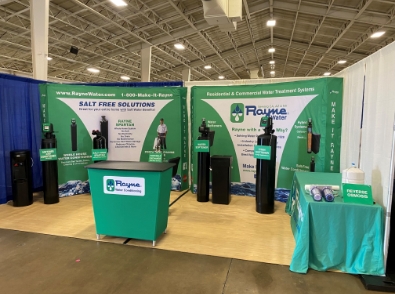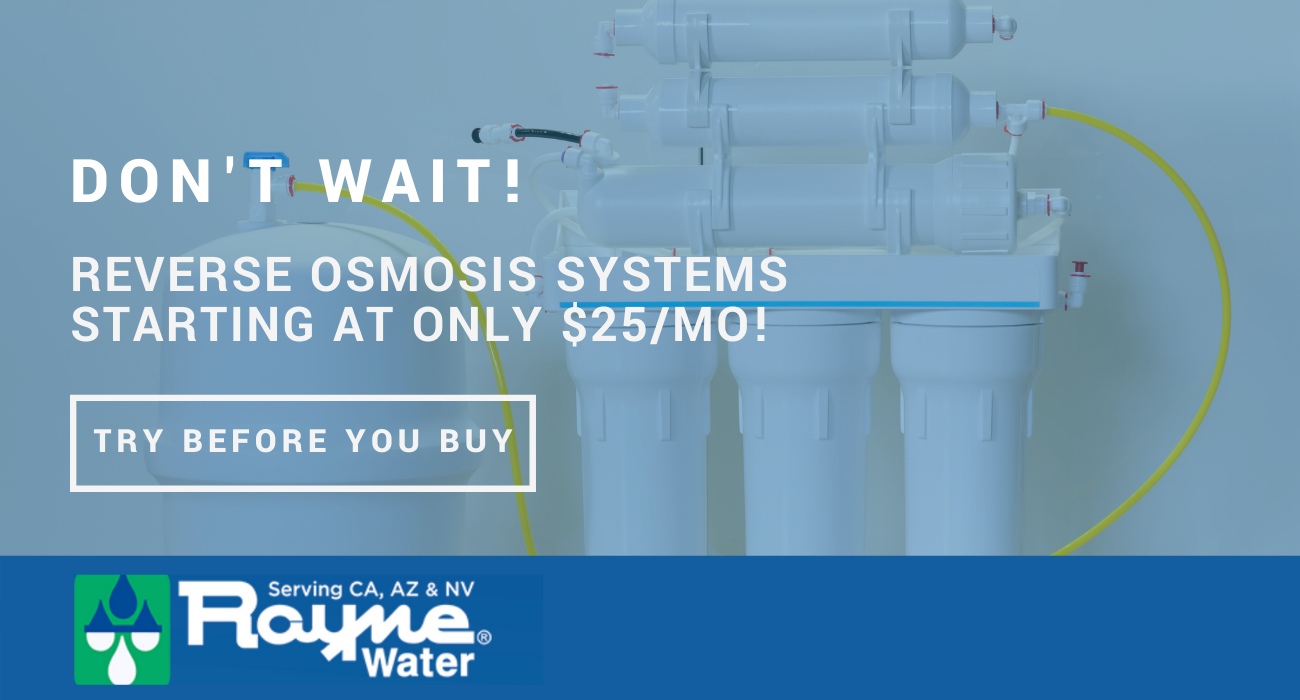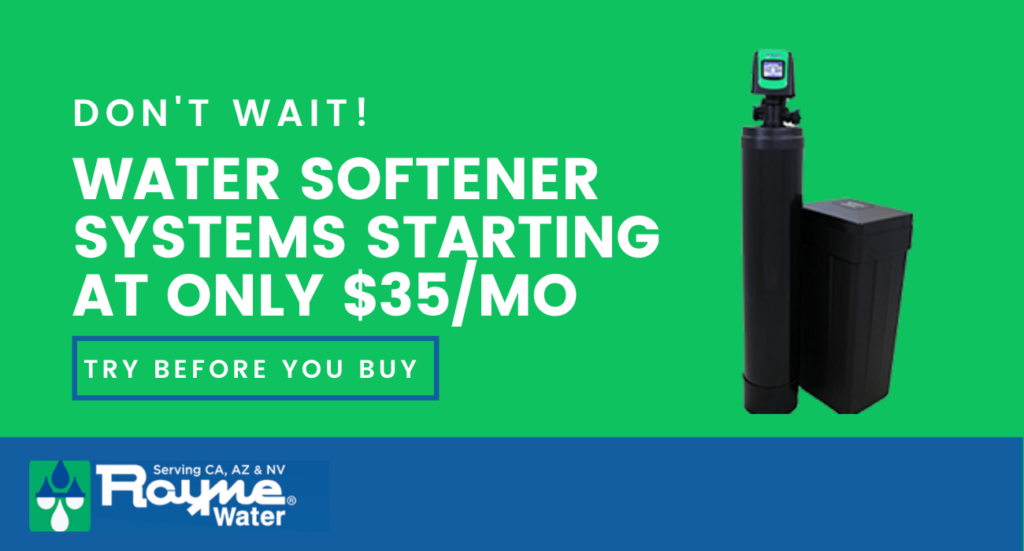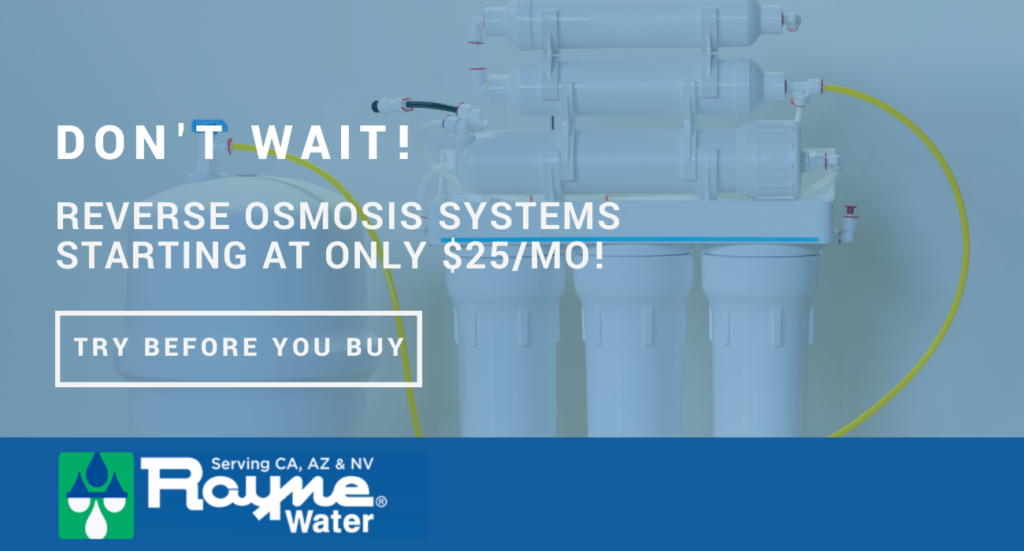Whether you’re starting to notice mineral buildup on your faucets in your new home or you have noticed it building up over the years, it’s never the wrong time to invest in your home’s water quality and eliminate hard water problems.
You might be wondering, “what is hard water and what exactly does a water softener do? Installing at-home water softeners can reduce the amount of “hard” minerals—like calcium and magnesium—in your water, therefore improving your appliance performance, as well as protect your plumbing and soft water for your skin, clothes and hair.
Before you take the plunge towards soft water, consider your options—should you rent or buy water softener equipment? The answer will depend on your personal preference. In this article, we’ll break down the benefits of buying vs renting to help you decide which investment type is right for you and your family.
Whether you choose to buy or rent a water softening system, you’ve still taken a step in the right direction—supplying your home with softer, cleaner water.
Renting vs. Buying: Which Is For You?
The decision to rent or buy water softener equipment isn’t all that different from other rent/buy quandaries—it all comes down to your personal opinion and preference.
But, comparing water softener systems to home-buying or renting isn’t the most helpful analogy. Instead, let’s consider a different example—a washer and dryer.
Your local appliance shop likely offers three options for purchasing a washer and dryer:
- Payment in full
- Payment in installments (financing)
- Renting
If you’re determined on the model and are fully ready to upgrade your washer and dryer to newer, more efficient models, paying for the appliances in full is probably the simplest option. A benefit of this is that you don’t have to worry about paying interest or dealing with monthly payments.
If you aren’t too sure about what options best fit your needs, renting may be the right fit for you. If you finance your washer and dryer, you’ll have to make monthly payments and most likely pay interest as well.
Renting is an excellent option in a few scenarios:
- You’re renting your home – If you don’t plan to live in your current home for life, or if you’re only temporarily renting a place to live while you save up to purchase real estate, renting equipment gives you the freedom to move your equipment to a new home or terminate your agreement if your next home already includes these appliances.
- You can’t afford to pay in full right now, but don’t want to pay the interest – You simply can’t live without some appliances. Renting may not be the least expensive option over time, but if money is tight right now, it can provide an affordable, temporary solution to your needs.
- You only need the appliances short-term – If you have a plan to purchase after setting aside money for a few months, you might still need these appliances in the interim. Short-term renting can meet your needs until you have the money to pay in full.
Just like funding any other appliance, deciding to buy, rent, or finance a water softener depends on several factors. Either way, you’re in the right direction for softened water that’s clean for all your water usage.
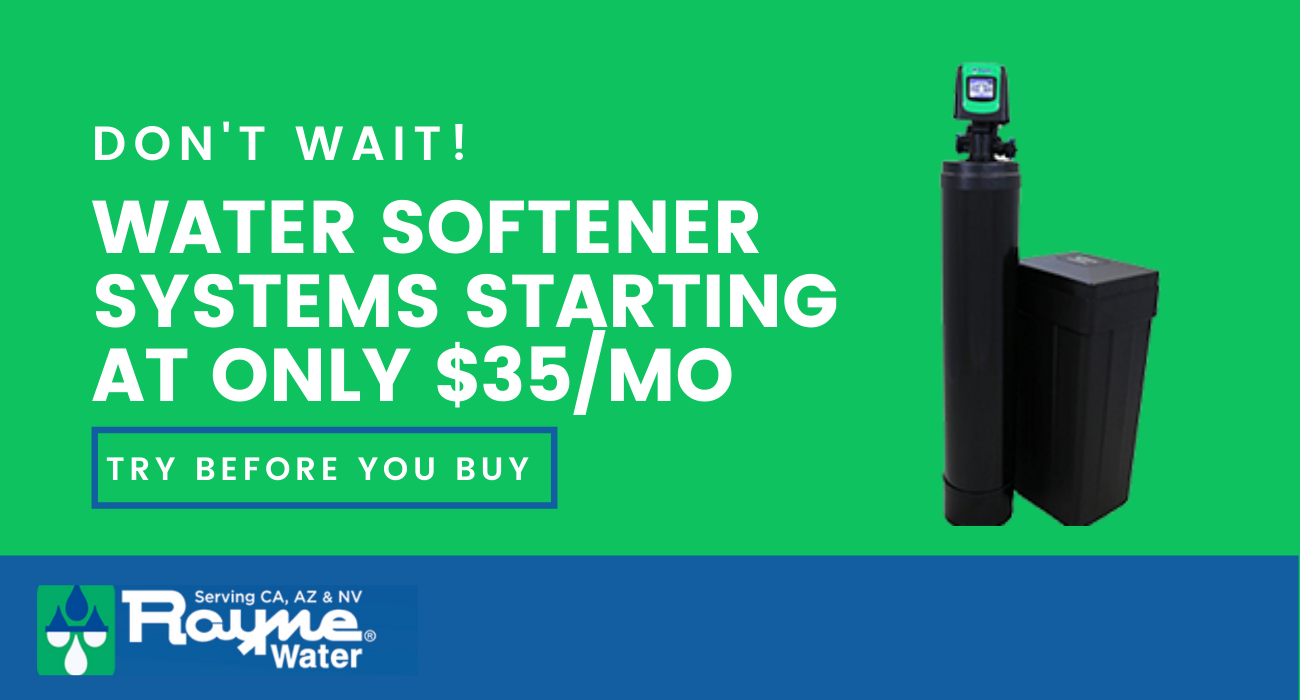
Reasons to Rent
If you’re still having a hard time deciding whether to rent or buy water softener equipment, let’s explore a few reasons why a water softener rental might be right for you and your water problems.
Freedom to Upgrade
Instead of thinking of renting as a temporary solution, consider it a research opportunity.
If you choose to rent equipment, you have a chance to “try before you buy.” You have multiple options for water softeners, and renting can allow you to sample all of your options.
There’s also another perk—you can upgrade your system at any time.
When you rent a water softener instead of buying, you have the freedom to make changes to your custom solution setup at any time.
Opportunity to Test Out Combined Systems
You might be on the fence about which water system is right for you. After all, you have numerous options to consider:
- Traditional ionic water softener systems
- Salt-free systems
- Systems that soften and filter
- Tank delivery
- Reverse osmosis systems
If you have multiple water-related needs but are unsure which single solution will produce the best results, consider testing out various combinations of water systems to find the perfect equipment for your circumstances.
Renting gives you an excellent opportunity to assess all of your options and tweak your system to achieve optimal results before committing to a purchase .
With the exception of salt, all service and required maintenance are part of the rental agreement
3 Reasons to Buy
If you’re all set to purchase a system, but renting is starting to sound like an attractive option, don’t rule out payment in full just yet. Let’s explore three reasons why making an in-full purchase or financing might be the ideal choice for your situation.
#1: It’s a Permanent Solution to a Long Term Problem
Hard water is always going to be around. So when you decide to buy a water softener it automatically fixes your problem of having hard water. Why wouldn’t you want to say goodbye to mineral buildup and clogged pipes.
#2: Saves Money
Depending on how long you need a water softener for, long term buying may be the financially smart choice. The longer you use your water softener, the more you get out of your money. The initial cost of buying a water softener system seems scary, but if you consider the long term investment of owning your equipment, the savings can be substantial.
#3: An Average System Lasts 15-20 Years
When you purchase a water softener system you are making an investment for your future. An average water softening system lasts a good 15 to 20 years depending on how well it is upkept. Another added benefit of purchasing a system is that it adds value to your home. So enjoy the benefits of your system today and in the future.
Rayne Water Conditioning: Providing Your Family With All Your Water System Needs
Whether you rent or buy, a water softener system provides you and your family with many benefits.
Sometimes, you need help from an expert. At Rayne Water , we’ve been helping people just like you choose the best water systems as well as the best programs and packages since 1928. For 94 years in business, we’ve helped countless families in California, Arizona, and Nevada by improving the quality of their water
Contact us today for professional advice, an estimate, or a home visit, and take control of your home’s water quality.

Sources:
- Minnesota Department of Health. Home Water Softening. https://www.health.state.mn.us/communities/environment/water/factsheet/softening.html
- Rocket Mortgage. What is Compound Interest and How Is It Calculated? https://www.rocketmortgage.com/learn/compound-interest
- Dun & Bradstreet. Financial and Credit Risks. https://www.dnb.com/resources/finance-credit-risk.html

